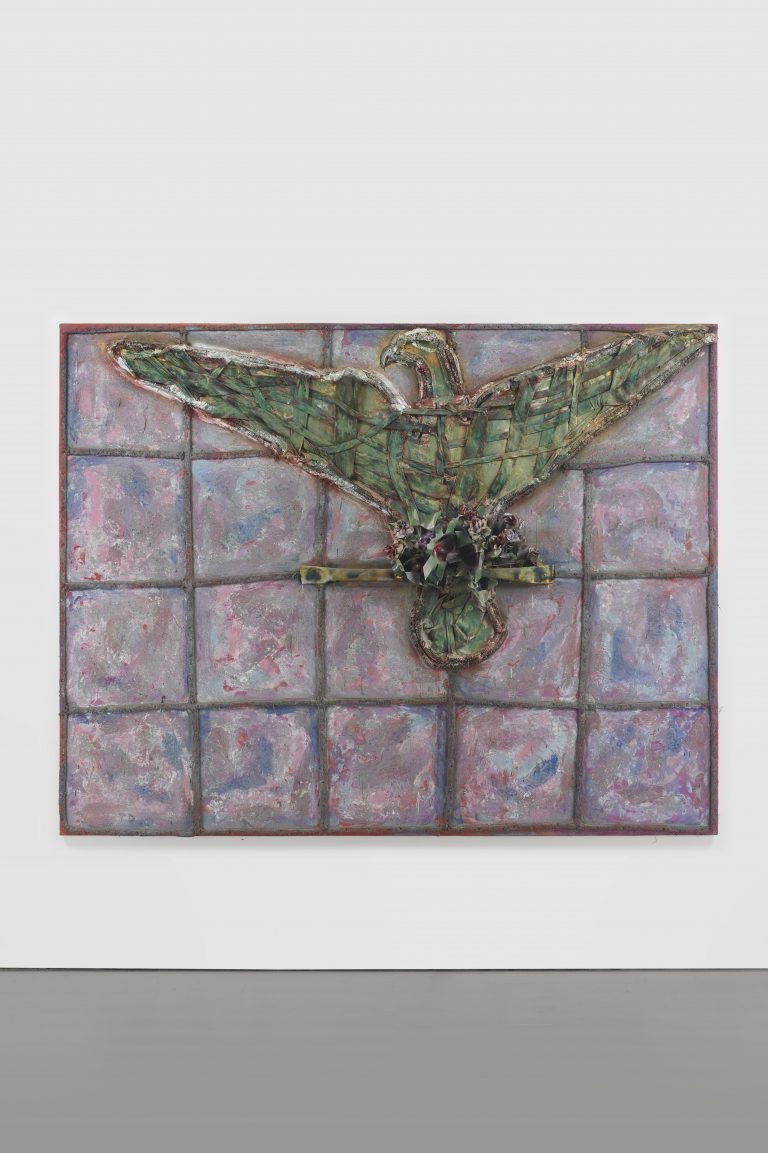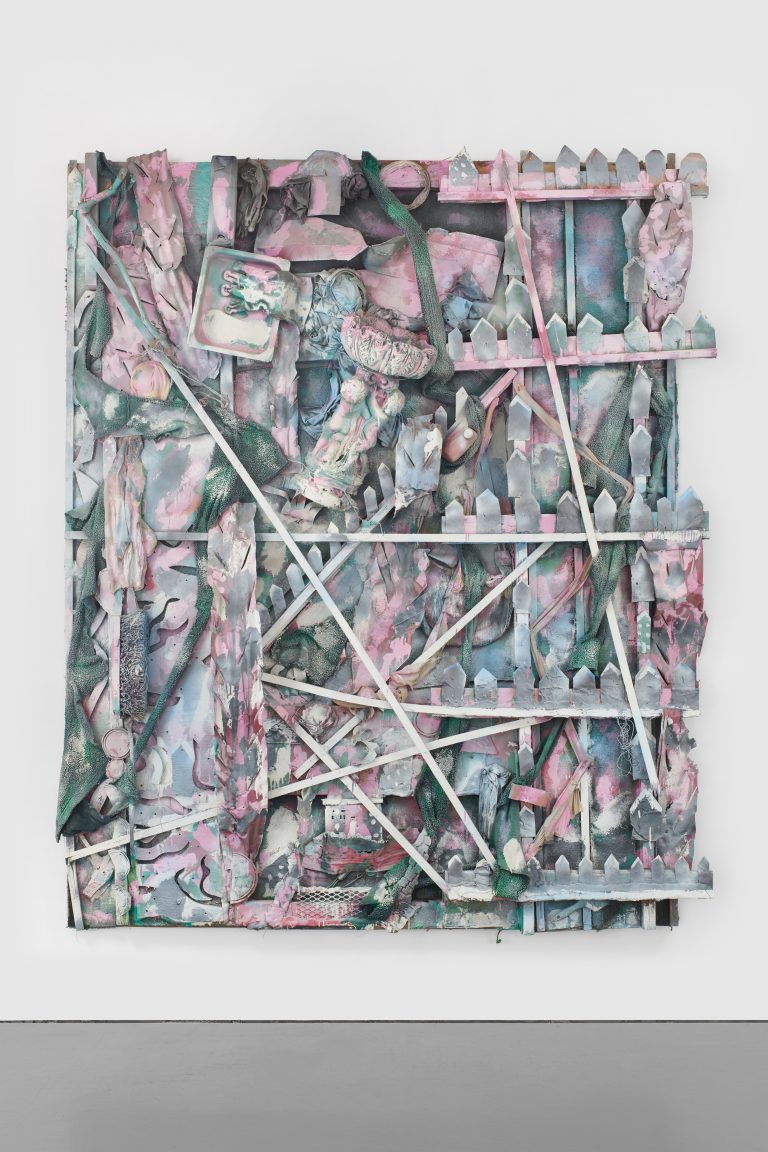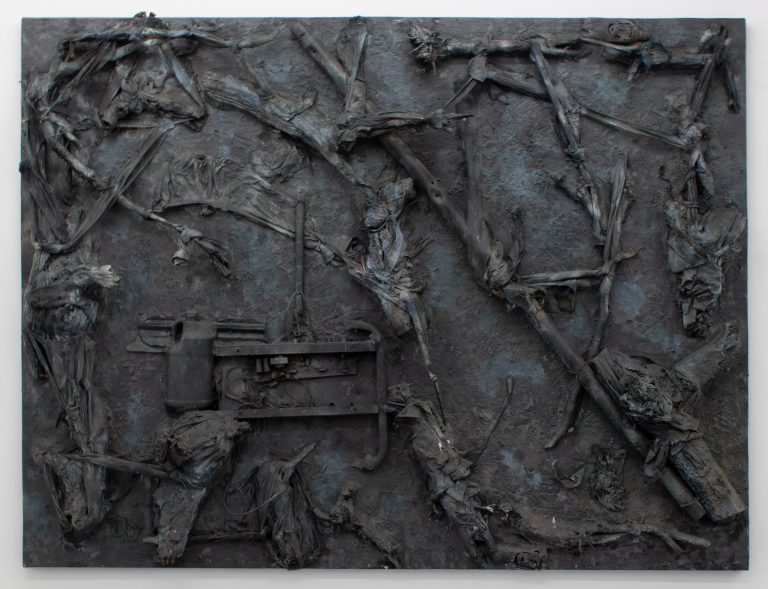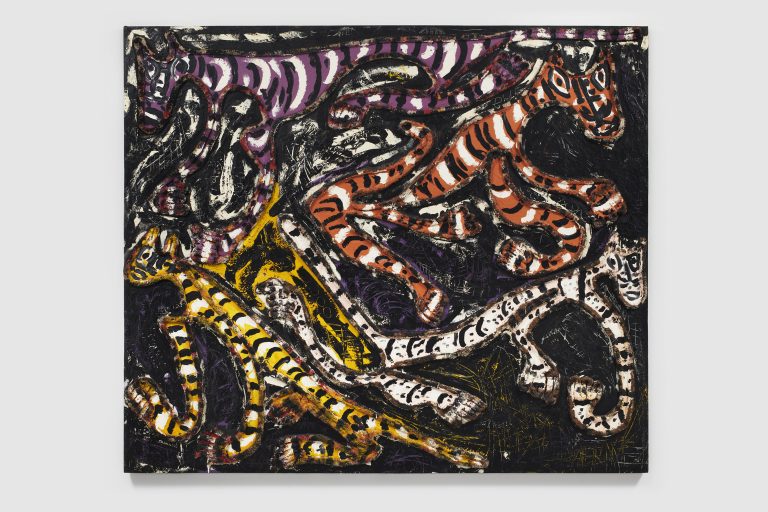Thornton Dial*

Thornton Dial, Master of Space, 2004. Courtesy the Artist and Souls Grow Deep Foundation, Société and David Lewis

Thornton Dial, By Myself (Looking at Life), 2012. Courtesy the Artist and Souls Grow Deep Foundation, Société and David Lewis
Société and David Lewis present Thornton Dial: Allegory and History, the artist’s first ever exhibition outside the United States. The exhibition will encompass all periods of Dial’s production. It presents major works that trace the development of this significant American artist’s materialist reckoning with the problem of history, historical trauma, questions of memory, and representation.

Thornton Dial, The Clouds at Ground Level, 2003. Courtesy the Artist and Souls Grow Deep Foundation, Société and David Lewis
All the Cats in Town (1993) is indicative of the early, allegorical and expressionist period of Dial’s work. An exuberant, expressive composition, it shows the artist’s engagement with the iconic image of the tiger, who, in Dial’s universe “is always trying to climb his way to freedom, slink past the gates of dominant culture, claw his way out of trouble, and land on his feet despite the danger and indignities imposed on him.” Dial’s references become more historically specific in later works, such as Master of Space (2004), in which an eagle made of neckties and artificial flowers
expands its wings atop a methodically segmented picture plane. If the work The Clouds at Ground Level (2003), which draws upon Dial’s experience at the site of Ground Zero in NYC, gestures toward the loss of vision through an amorphous composition of gnarled machine parts, plastic bottles, and found metal, then perhaps the comparatively sparse forcefulness of Master of Space, with its references to corporate American imperialism, male supremacy, racism, and the Iraq War, can be understood in terms of hyper-visibility. Dial’s grappling with history and storytelling extends from larger geo-political and social conflicts to the more granular, lived experienced of American people, such as his tender tribute to women’s work and strength, Memories of the Ladies Who Gave us the Good Life (2004). The final period of Dial’s production reveals a turn inward, pairing a broader, more humanistic approach to history with personal reflection. The Rich Man’s House (Tsunamis Don’t Discriminate) (2011), is typical of the ecological awareness that Dial exhibits in his late work and gains resonance from the biblical image of the flood as a symbol of overarching redemption and reckoning-an ultimate plea for justice. With its use of wire fencing and mattress springs, By Myself Looking at Life (2012) plays upon the double valence of its materials, conjuring both the history of slavery and subjugation, as well as Dial’s own ability as an artist to make things from nearly any materials that he has at hand.The lyrical singularity of Looking at Life evokes Philip Guston’s description of the act of painting as “a long, long preparation for a few moments of innocence.”

Thornton Dial, All the Cats in Town,1993. Courtesy the Artist and Souls Grow Deep Foundation, Société and David Lewis
Thornton Dial (b. Emelle, AL, 1928; d. McCalla, AL, 2016) has had solo exhibitions at the High Museum of Art, Atlanta (2016, 2013); New Orleans Museum of Art (2012); Indianapolis Museum of Art (2011); Museum of Fine Arts, Houston (2005); New Museum of Contemporary Art, New York (1993); and the American Folk Art Museum, New York (1993).
Recent group exhibitions include the de Young Museum, San Francisco (2017); Birmingham Museum of Art (2017); Saint Louis Art Museum (2016); Intuit, Chicago (2016); Brooklyn Museum (2015); The StudioMuseum in Harlem, New York (2014); Museum of African American History, Detroit (2002); Bass Museum of Art, Miami (2002); Whitney Biennial, Whitney Museum of American Art, New York (2000); and the Corcoran Gallery of Art, Washington D.C. (1994), among many others. Dial’s work is included in many public collections including the Metropolitan Museum of Art, New York; Philadelphia Museum of Art, Philadelphia; Museum of Fine Arts, Houston; Hirshhorn Museum and Sculpture Garden, Washington D.C.; Museum of Modern Art, New York; Whitney Museum of American Art, New York; de Young Museum of Art, San Francisco; High Museum of Art, Atlanta; Brooklyn Museum; Harvard Art Museums, Cambridge; and the Smithsonian American Art Museum, Washington D.C., among many others.
